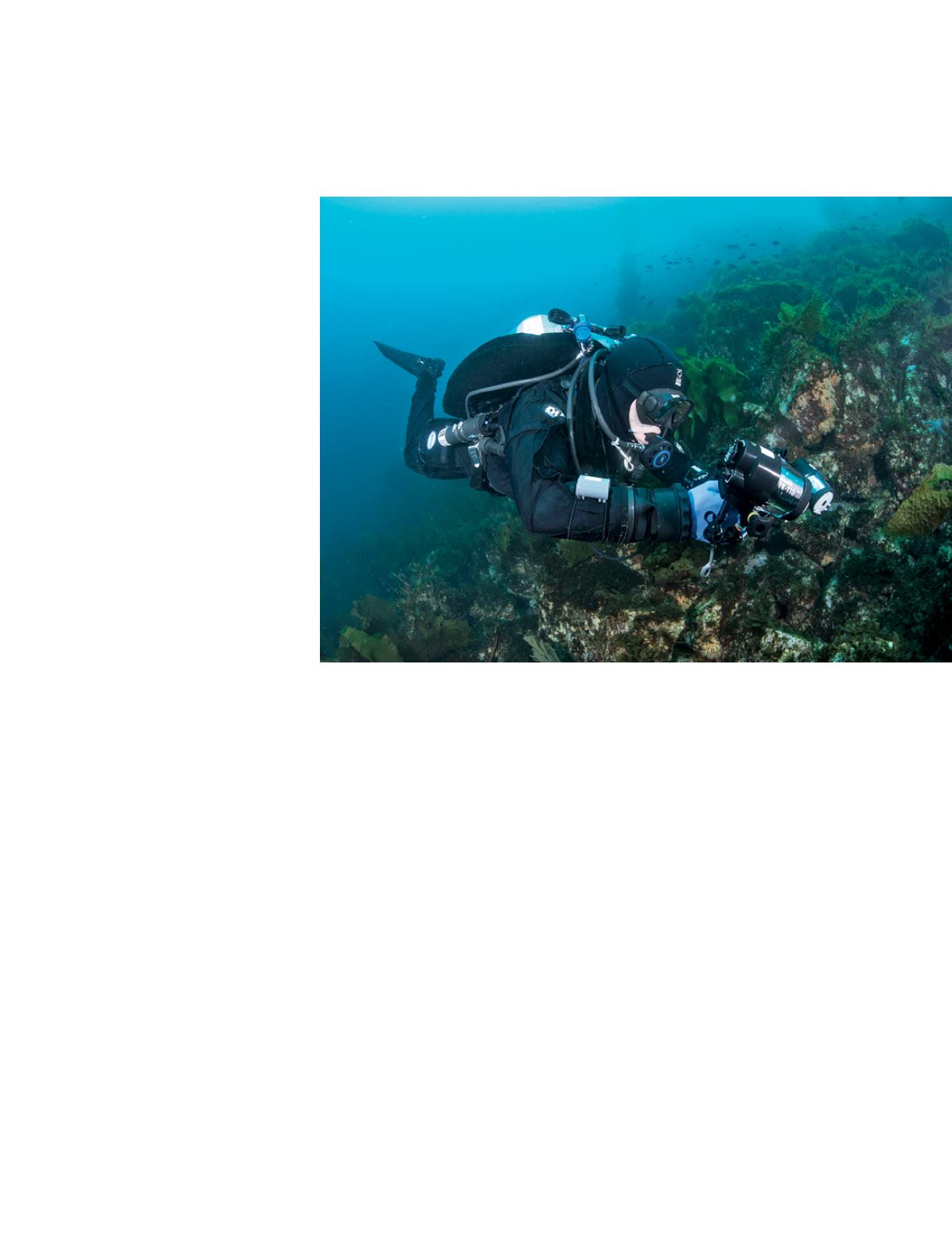
T
hese days there
are a multitude of
opportunities to expand
your diving horizons.
You can take a cavern- or ice-diving
course, learn to dive sidemount, sign
up for a nitrox or tech class or even
get certified on a rebreather.
But whether you’re a beginning
diver or an experienced one, perhaps
the most important thing you can do
to improve your diving is to master
the ability to be neutrally buoyant
and maintain a stable, horizontal
position — also known as good trim
— throughout the dive.
These skills are not learned
overnight or through a training course
alone. Without practice most divers
find it difficult to maintain neutral
buoyancy for more than a few moments while holding
perfectly still, and many swim in a head-up, feet-down
attitude (or position), which leads to excessive exertion as they
move through the water.
But for those willing to do the work, the rewards are
dramatic. Divers who perfect these techniques experience
less fatigue, reduce their gas consumption, may learn new
skills more easily, safeguard the environment and benefit from
improved confidence and control underwater.
Underground Technique
Cave divers became strong proponents of good buoyancy and
trim in the 1980s in response to the challenges of diving in an
overhead environment. In caves, precise buoyancy control is
critical; gas and energy are precious resources that must not
be wasted through inefficient technique. Effective position
control also prevents collisions with the cave, which can
stir up silt and or knock debris from the ceiling, destroying
visibility and jeopardizing the safety of the dive team.
Good trim is also essential in caves. By maintaining a
streamlined horizontal orientation with the head forward, the
legs bent at the knees and the feet elevated, divers minimize
their surface area in their direction of travel and can therefore
move through the water with less resistance. This reduces
workload and gas consumption. Furthermore, movement
up or down while horizontal is subject to greater resistance,
which further enhances divers’ ability to control their position
in the water column.
Defining Good Buoyancy and Trim
Explorer and educator Jarrod Jablonski, founder of Global
Underwater Explorers (GUE), recognized the importance of
these techniques outside of caves and created a program to
promote and teach them in the late 1990s. His key insight was
that some important skills in diving such as running a reel,
shooting a surface marker buoy (SMB) or sharing gas with an
out-of-air diver were easy once a diver had a stable platform
to work from. Accordingly, Jablonski made buoyancy and
trim the focus of GUE’s core curriculum in a course called
GUE Fundamentals, which serves as the starting point for the
organization’s recreational and technical training.
Most training agencies now offer a course or a module that
addresses good buoyancy and trim (see sidebar). However,
Mastering Neutral Buoyancy
and Trim
B y M i c h a e l M e n d u n o
44
|
FALL 2013
RESEARCH, EDUCATION & MEDICINE
//
A D V A N C E D D I V I N G
Above: Good buoyancy control is a prerequisite for photography and
many other underwater pursuits.
Opposite: Some divers favor wings over jacket-style BCDs because they
can promote a horizontal orientation.
TOM BOYD


